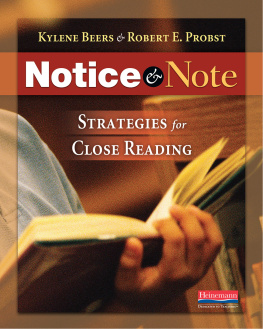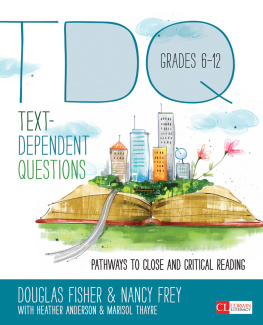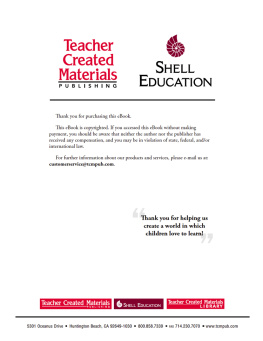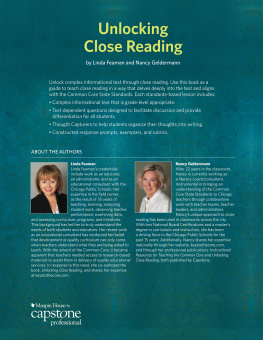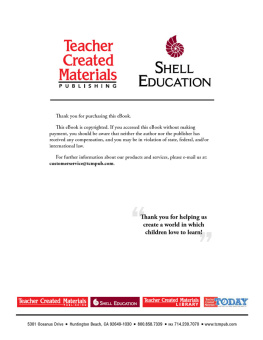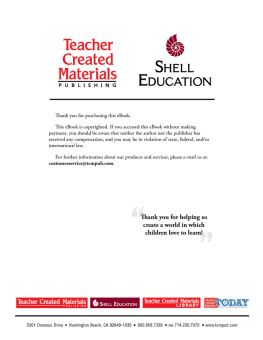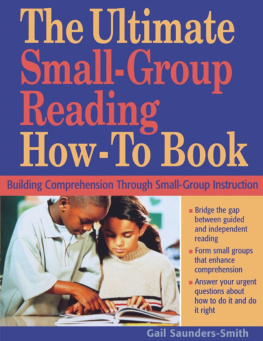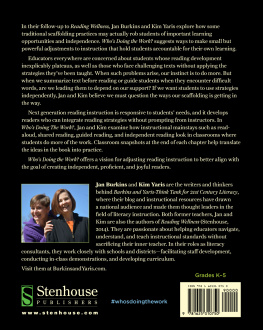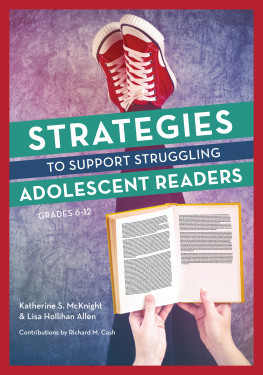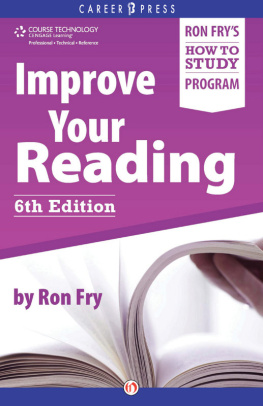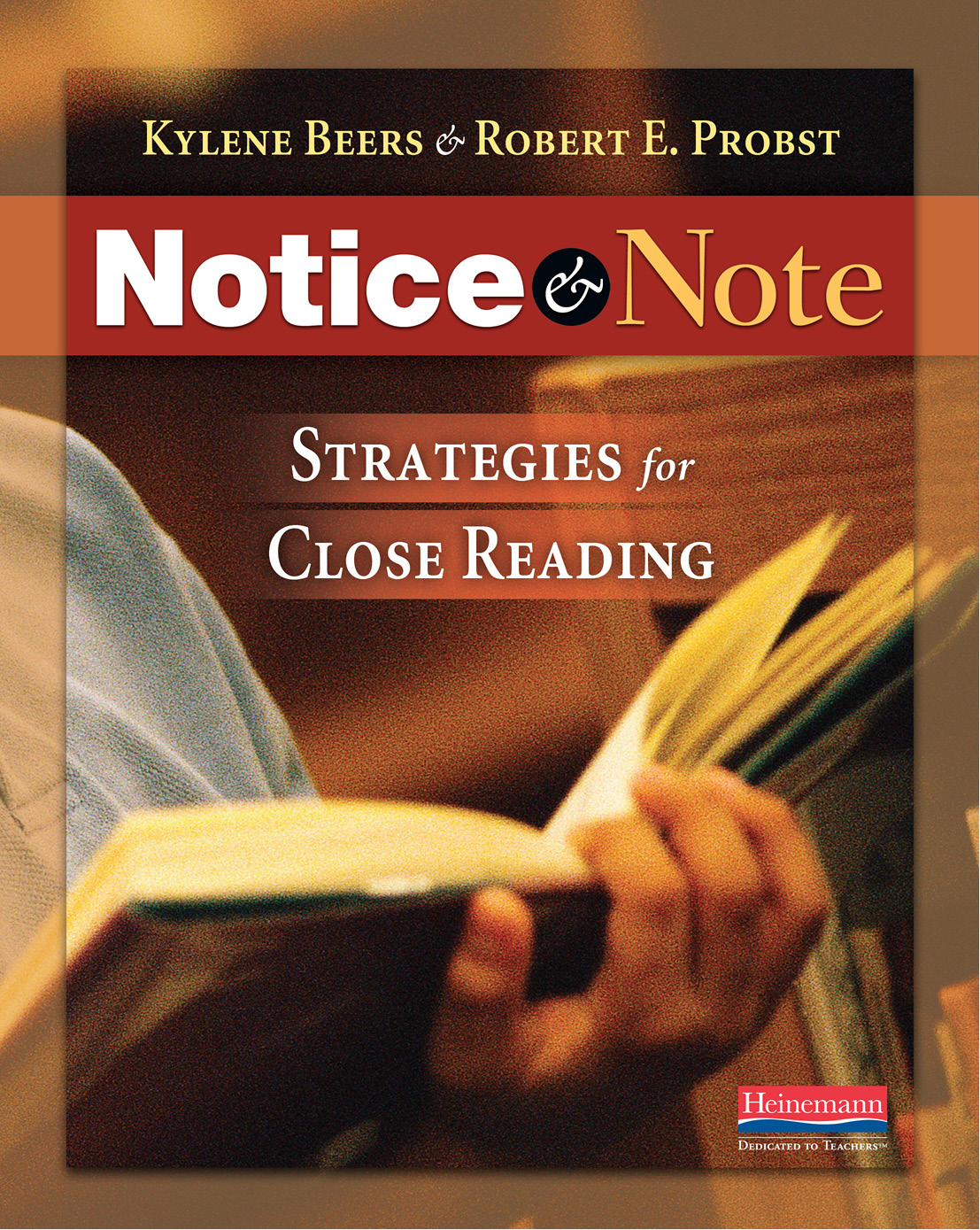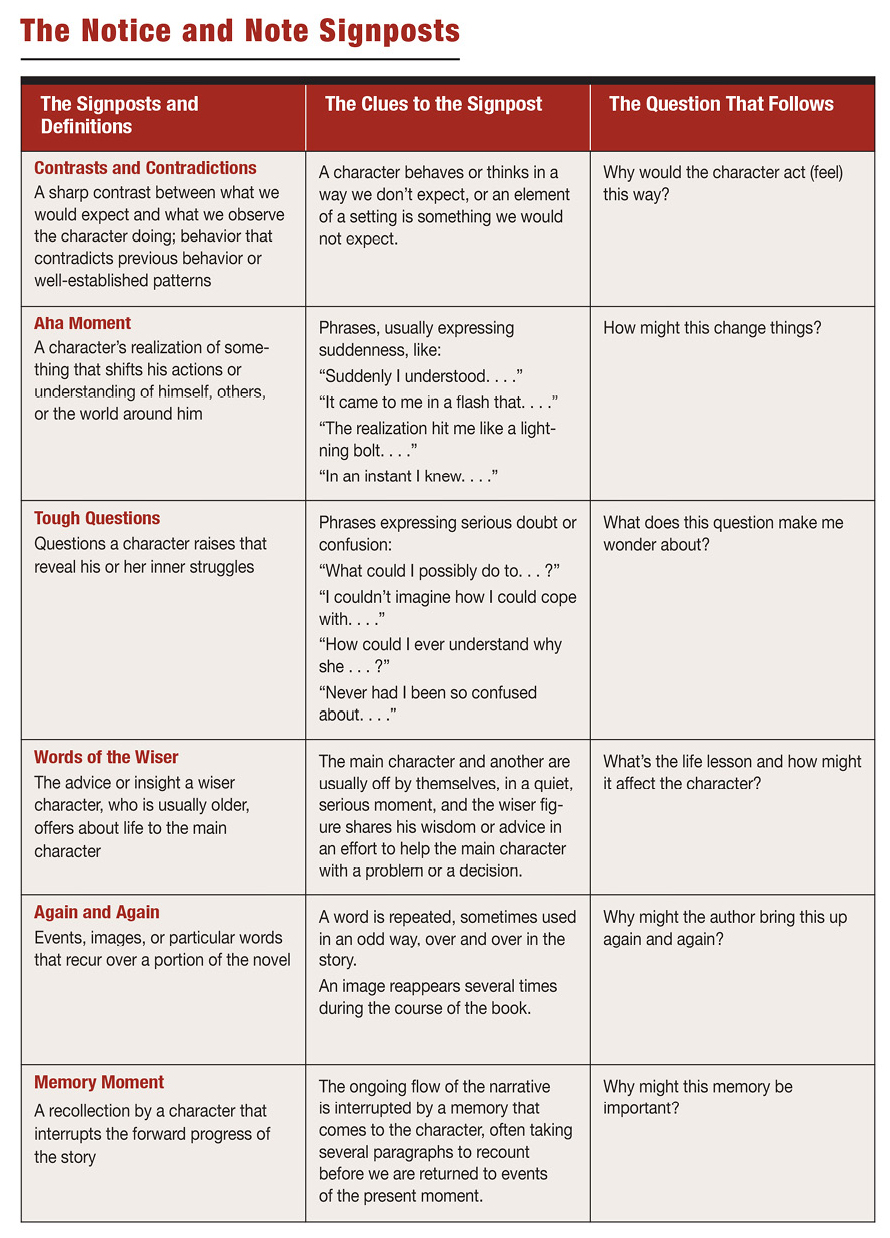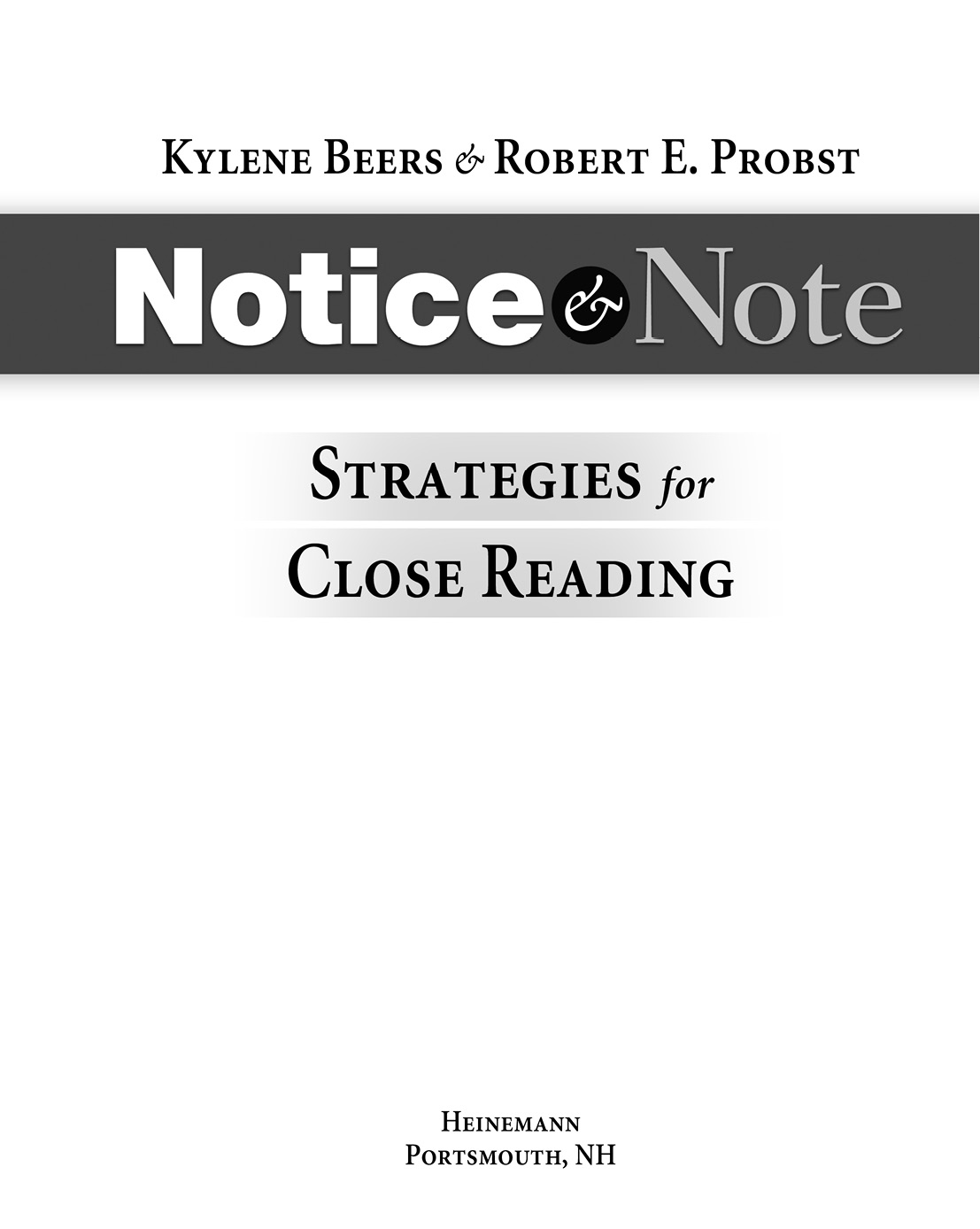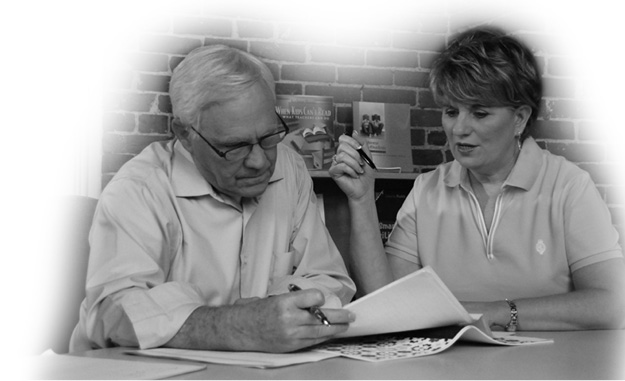Praise for Notice & Note from Educators Like You
This is the missing link. While the Common Core State Standards require students to read complex texts, read closely, and answer text-dependent questions, nothing shows us how to help students do all that during independent readingnothing until Notice and Note came along. Kylene and Bob show us how we can attend to the demands of the CCSS and support engaged, attentive, independent readers.
Darl Kiernan, Ph.D.
Literacy Trainer, Northwest Regional Professional Development, NV
As Bob and Kylene taught their Notice and Note lessons, I watched our students become engaged and excited about reading. Students scoured the text to find support for their thinking, and struggling readers succeeded with texts that would have otherwise been discarded as too hard. Dont buy just one of these booksbuy one for every teacher in your building!
Margaret Ruppert
Literacy Specialist, Akron Public Schools, Akron, OH
Bob and Kylene shared these lessons in my class of eighth graders. When my students began to notice the signposts and ask the accompanying anchor questions, navigating a text became possible even for my struggling readers, and the text became something they not only deeply understood but also enjoyed.
Jennifer Ochoa
Middle School Teacher, MS 324, New York City, NY
Notice and Note will help you foster rigorous reading and high-level thinking while honoring your students need to interact with what they read. Kylene and Bob forge connections between new academic standards and decades of reading research through commonsense strategies that encourage collaboration and engaged reading. This book is well worth noticing and noting.
Donalyn Miller
Author of The Book Whisperer and Grade 4 Teacher, Fort Worth, TX
Teaching students to respond to complex texts is a critical aspect of implementing the Common Core State Standards. When I use Notice and Note lessons in my professional development sessions, teachers invariably go deeper into long, familiar texts. These strategies awaken our critical eye and direct us to explore text elements that we might otherwise ignore. Notice and Note strategies will improve how your students analyze and respond to any text.
Patsy Dunton
ELA Specialist, Maine DOE, ME
As Kylene and Bob taught their Notice and Note lessons at Chicago Shakespeare, I watched a room of teachers get curious, slightly anxious, and then completely enthusiastic about these new avenues for approaching literacy in their urban classrooms. Kylene and Bob understand research and real classrooms, which is why their work continues to be essential.
Marilyn Halperin
Director of Education, Chicago Shakespeare Theater, IL
Heinemann
361 Hanover Street
Portsmouth, NH 03801-3912
www.heinemann.com
Offices and agents throughout the world
2013 Kylene Beers and Robert E. Probst
All rights reserved. No part of this book may be reproduced in any form or by any electronic or mechanical means, including information storage and retrieval systems, without permission in writing from the publisher, except by a reviewer, who may quote brief passages in a review, and with the exception of reproducible pages which are identified by the Notice and Note credit line and may be photocopied for classroom use only.
Dedicated to Teachers is a trademark of Greenwood Publishing Group, Inc.
The authors and publisher wish to thank those who have generously given permission to reprint borrowed material in this book:
Thank You, Mam from Short Stories by Langston Hughes. Copyright 1997 by Ramona Bass and Arnold Rampersad. Reprinted by permission of Hill and Wang, a division of Farrar, Straus and Giroux, LLC.
Excerpts from Crash by Jerry Spinelli. Copyright 1996 by Jerry Spinelli. Used by permission of Alfred A. Knopf, an imprint of Random House Childrens Books, a division of Random House, Inc.
Excerpts from A Long Walk to Water by Linda Sue Park. Copyright 2010 by Linda Sue Park. Reprinted by permission of Clarion Books, an imprint of Houghton Mifflin Harcourt Publishing Company. All rights reserved.
Excerpts from Hatchet by Gary Paulsen. Copyright 1987 by Gary Paulsen. Reprinted with the permission of Atheneum Books for Young Readers, an imprint of Simon & Schuster Childrens Publishing Division.
Excerpts from Hope Was Here by Joan Bauer. Copyright 2000 by Joan Bauer. Used by permission of G.P. Putnams Sons, a division of Penguin Group (USA) Inc.
Cataloging-in-Publishing Data for this book is available from the Library of Congress
Editor: Debra Doorack
Production: Stephanie J. Levy
Cover and interior designs: Lisa Fowler
Typesetter: Eclipse Publishing Services
Manufacturing: Steve Bernier
e-ISBN: 978-0-325-05748-4
Dedication
For Louise Rosenblatt
Dedicated to the lifelong work and ongoing inspiration of friend and mentor
19042005
Contents
Contents
Im not under the illusion that the schools alone can change society. However, I can reaffirm the belief uttered so many years ago: We teachers of language and literature have a crucial role to play as educators and citizens. We phrase our goals as fostering the growth of the capacity for personally meaningful, self-critical literary experience. The educational process that achieves this aim most effectively will serve a broader purpose, the nurturing of men and women capable of building a fully democratic society.
from Retrospect by Louise Rosenblatt, found in Transactions with Literature: A Fifty-Year Perspective, edited by Edmund J. Farrell and James R. Squire (NCTE, 1990)
Introduction
We Begin
Notice and Note presents a suite of new lessons for helping students read literary texts with deeper understanding. Weve been working on these lessons since 2008. With a publication date of fall 2012, you could possibly think were slow. We prefer to think were thorough. (Our editor might side with you.) Actually, some of the thinking for the ideas presented in this book probably was planted long before 2008, perhaps when we bothseparatelymet Louise Rosenblatt in person and through her seminal texts: Literature as Exploration and The Reader, the Text, the Poem.
The text awakens associations in the readers mind, and out of the mix, meaning is created. It resides neither in the text nor in the readers mind, but in the meeting of the two.
These books, and Louise herself, shaped our thinking about reading and about the role of literacy in creating a democracy. Meaning cant reside in the ink spots on paper, she said. Meaning emerges as readers, with all their own thoughts and experiences and predispositions, interact orto use Rosenblatts wordtransact with those squiggles.
The text awakens associations in the readers mind, and out of the mix, meaning is created. It resides neither in the text nor in the readers mind, but in the meeting of the two.

